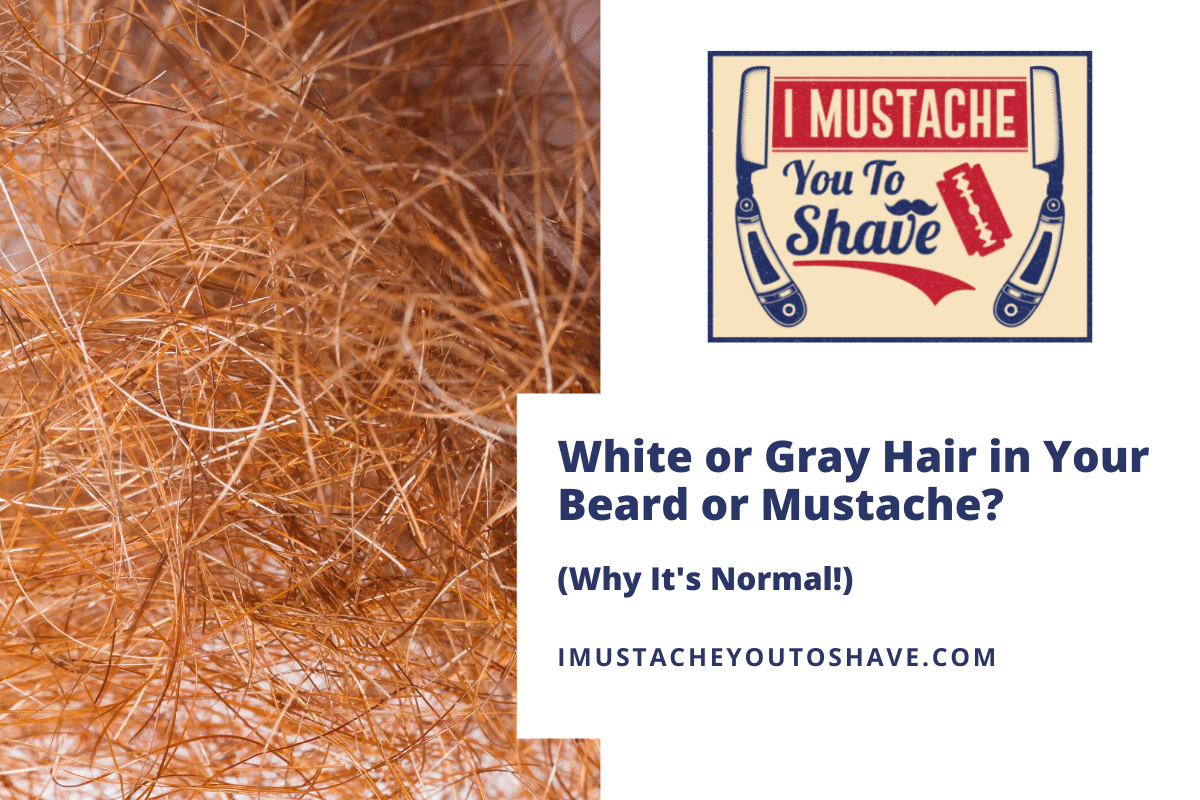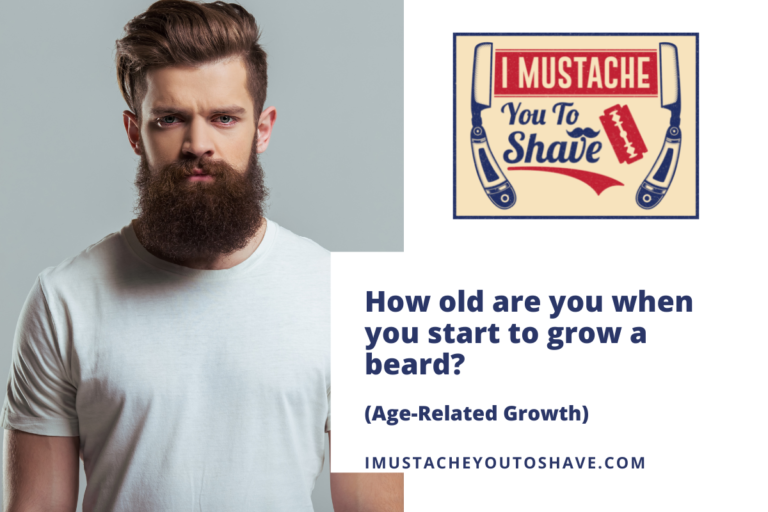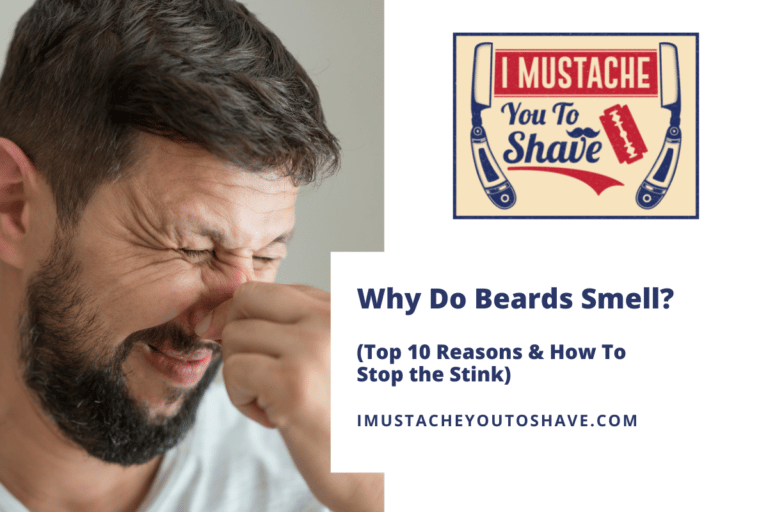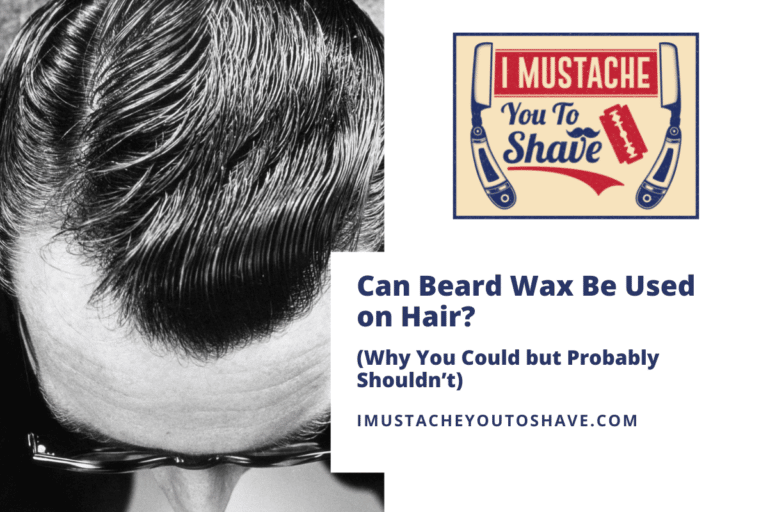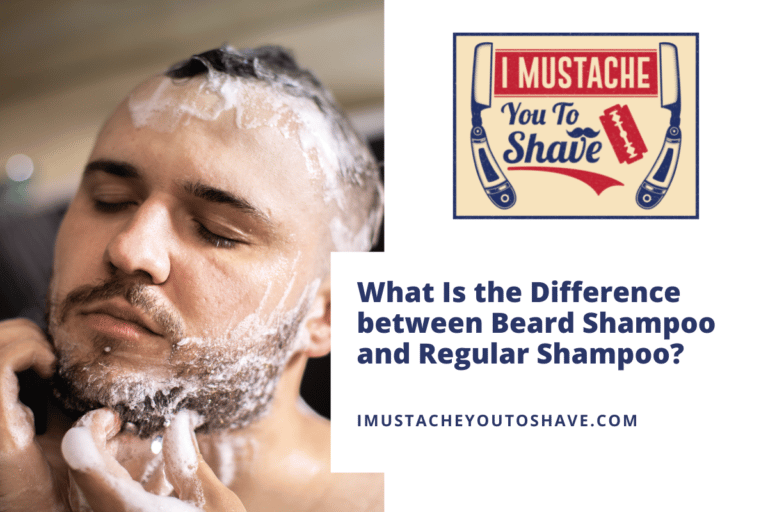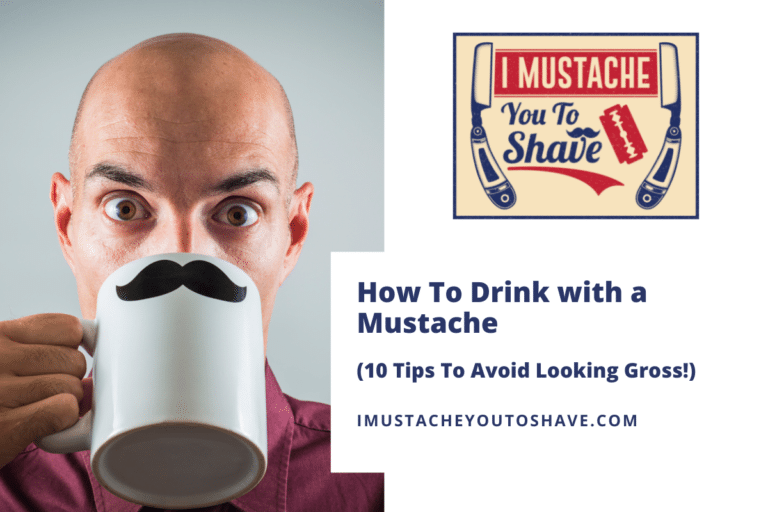White or Gray Hair in Your Beard or Mustache? (Why It’s Normal!)
You take a look in the mirror and notice a few lightly colored hairs mixed among the dark. Is this normal? Why am I seeing them so early?
It is normal for white and gray hairs to appear in your beard or mustache starting as early as your twenties. Genetics is the primary factor in determining the time and rate at which your hair will lose pigment, but lifestyle and illness are also contributors. Vitamins B6 and B12 and foods high in antioxidants may help increase melanin production.
Keep reading to learn why the hairs in your beard or mustache may be fading, and what you can do to stop it.
Why am I getting white hair in my beard?
In our culture, we tend to associate white and gray hair with advanced age. So, when we spot that first hair in our beard in our twenties or thirties, we wonder why we are turning gray so soon.
White and gray hair occurs when the hair color pigment, melanin, isn’t present or decreases. Genetics is the main factor determining the time and rate at which your hair will lose pigment.
Pigment production in the hair isn’t continuous like it is in the skin. Hair pigment is dependent on the hair stage cycle. During the growth stage, the pigment is active. During the transition stage, the pigment is “turned off” and becomes absent during the resting stage.
Some studies show that 50% of the population will have at least 50% gray by the age of 50. Other studies show this may be overstated. A global study including different ethnicities and geographical locations cites the range more in the 6-23% range. Regardless, as you age pigment production decreases and grays begin to appear.
Fun Fact: We often use the term “turn gray,” but the existing hair doesn’t actually “turn” or change color. Instead, the hair follicles produce less pigment, so new hairs grow lighter in color.
White hair in beard at an early age
If you spot some gray in your beard in your twenties or thirties, you may think you are graying prematurely. However, premature gray is defined as graying of the hair before age 20 in Caucasians and age 30 in African Americans.
White or gray hairs can show up at an early age. Beard hairs tend to turn white or gray earlier than the hair on the head due to facial hair growing at a faster rate than scalp hair.
White hairs are completely devoid of pigment while gray hairs have reduced pigmentation. Since there is a strong genetic connection to the graying process, looking to your dad or grandfather can give you clues as to when the graying process might occur for you.
20 years old
As we saw earlier, premature gray technically occurs before age 20 or 30 depending on ethnicity. However, most men are still shocked to see white or gray hairs appear in their 20s.
It is normal for some white or gray hair to appear in the beard during the twenties. Most of the time their appearance is due to genetics, but early graying can be a sign of a medical condition like thyroid disease, vitiligo, autoimmune issues, or certain vitamin deficiencies.
If you are seeing an abundance of white or gray in your beard this early, it’s a good idea to see your doctor to rule out any medical issues.
30 years old
Each decade brings about an increase in the prevalence of white or gray hairs.
The majority of men will see a few white or gray hairs appear in their early thirties.
35 years old
The older we get, the more normal white or gray hair becomes.
Your cultural background makes a difference in onset. The average age of gray onset in Caucasians is 34 years old, so it is very likely a 35-year-old man will see a few white or gray hairs in the beard. The Asian population’s average onset is the late thirties while the Black population’s is mid-forties.
Fun Fact: You are born with all of the hair follicles you will need. The follicle determines your hair color and texture. Once you lose a strand of hair, the follicle begins growing a new one.
Can stress cause white hair in your beard?
You might associate gray hair with stress. While stress is not the leading contributor to gray hair, it can play a role. An NIH-sponsored study found that when mice were exposed to the stressors of mild pain, psychological stress, and restricted movement, melanocyte stem cells were reduced and graying hair resulted.
Genetics is the primary factor determining when white or gray hair will appear in your beard, but a link to stress and graying has now been proven in the lab. There is also a condition caused by stress called telogen effluvium which causes hair to shed and regrow faster than normal. This can result in faster graying.
The NIH mice study also discovered that an increase in norepinephrine was the key to lost stem cells. Once the cells are gone, they are gone forever and pigment can’t be produced. Now we know that fight or flight type stress situations can result in white or gray hair.
Fun Fact: Legend says that Marie Antoinette went completely gray overnight before her beheading. She was definitely under a lot of stress, but that isn’t scientifically possible!
Are white hairs dead?
Have you ever wondered what determines your hair color? There are two types of melanin responsible. Eumelanin is a dark brown or black pigment and pheomelanin is a reddish-yellow pigment. The ratio of these two pigments determines your hair color.
White hairs are not dead. White hairs contain no melanin, while gray hairs contain a reduced amount of melanin. Melanin resides inside dead keratinocytes.
Here’s more hair color science: melanocytes transfer melanin to keratinocytes. Keratin is the main hair protein. These keratinocytes die and the pigment is stored inside. While the hair isn’t dead, the bodies containing the melanin are.
Is it bad to pull out white beard hairs?
We’ve all heard the old wives’ tale “If you pull out one gray hair, three more will grow in its place” – is there any truth to this?
No. Each hair follicle can only grow one hair at a time. If you pluck one white hair, only one hair will replace it.
Pulling out white or gray beard hairs is not recommended because it can damage the hair follicle. If a hair follicle is damaged, it cannot grow a replacement hair. Even if the follicle remains intact, there is no benefit to pulling out hair since the next hair to grow from the follicle will be the same color.
Sometimes damaged hair follicles can repair themselves but this can take years. Repeated pulling of white hairs can eventually lead to thinning hair or bald spots.
Can you reverse white or gray beard hair?
If your white or gray hairs are caused by a medical condition or vitamin deficiency then it’s possible that treatment could stop the process. However, most graying is simply due to genetics or aging so stopping and reversing isn’t an easy fix.
Recently, there have been some interesting studies showing that the reversal of white or gray hair may be possible. These findings are promising, but more information is needed before a tried and true reversal method is developed.
While reversal may not be a quick and easy process yet, there are some actions you can take if you are facing those pesky white and gray beard hairs.
How to increase the melanin in your beard
Increasing melanin production is one way to slow the progression of white or gray hairs. Melanin supplements and home remedies abound but haven’t been scientifically proven as of yet. There are a few tricks to put more pigment-making melanin into those follicles.
Vitamins B6 and B12 are proven to increase keratin and melanin production. Eating foods rich in antioxidants, copper, and vitamins A, C, and E also increases melanin.
B vitamins are essential to melanin production. Studies have shown that low B12 can cause premature graying. Rich antioxidant foods such as berries, leafy greens, and beans are excellent choices to increase melanin.
Copper is essential to the formation of melanin and can be found in nuts and seafood. Getting important vitamins in your diet can increase melanin and keratin and keep the hair healthy and strong.
Can white facial hair be permanently removed?
If you are looking to remove your white or gray facial hair permanently, there aren’t many options.
Electrolysis is the most effective way to permanently remove white facial hair. This treatment is the only permanent hair removal method approved by the FDA. Electrolysis can be painful and it usually takes several treatments to be effective.
This hair removal technique is usually performed in a medical or esthetician office setting. A thin wire is inserted into the hair follicle causing permanent damage. This method is best used on smaller surface areas as it can be expensive and time-consuming.
Can you remove white beard hair permanently and naturally?
Changing the appearance of white or gray hair isn’t a new phenomenon. Mustache and beard mascara was marketed to men in the mid-1800s to cover grays or tint the hair to the desired color.
Besides electrolysis, there aren’t many ways to remove white or gray beard hair permanently, but there are some ways to provide temporary results. Dyeing with natural dyes or cutting the hairs can give a semi-permanent solution.
Permanent and semi-permanent hair colors can be applied at home or at a barbershop. These can offer gray coverage that lasts a few weeks to a few months. Plant-based dyes allow this process to be a more natural choice.
If the grays are few, cutting the individual hair strands can reduce their appearance in the beard.
How to help prevent more gray or white beard hair
Aging is inevitable but there are some ways to slow the progression. While genetics is the number one determiner of graying or white hair growth, intervening with certain lifestyle changes can help.
Reducing stress, eating a healthy diet, and quitting smoking can all help prevent premature aging and possibly slow the progression of gray or white beard hair.
Here are the best ways to prevent more gray or white beard hair:
- Reduce stress
- Eat a healthy diet
- Quit smoking
Reduce stress
Stress has a negative effect on our entire body but can also lead to early graying.
Exercise is a great way to let go of the stressors of life. Just 30-40 minutes of moderate exercise or 15-20 minutes of vigorous exercise each day can reduce stress.
Meditation and breathing exercises can also aid in stress reduction.
Eat a healthy diet
Eating a healthy diet is key to a healthy body.
All of our systems are affected by what we eat. Our hair follicles are no different. Eating foods rich in protein, antioxidants, vitamins, iron, copper, and iodine can increase melanin and keratin.
Choose meat, eggs, oily fish, and a rainbow of fruits and vegetables. If you find it difficult to get all of your vitamins with food, try taking supplements.
Quit smoking
Smoking can lead to premature aging which in turn can affect the presence of grays.
In fact, there is scientific evidence to back this up. There have been several medical studies like this one that show a significant relationship between smoking and going gray before the age of 30.

